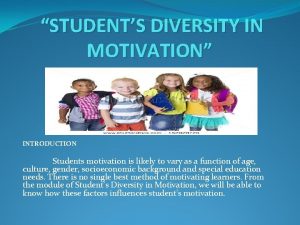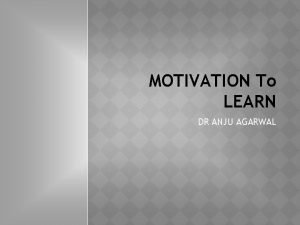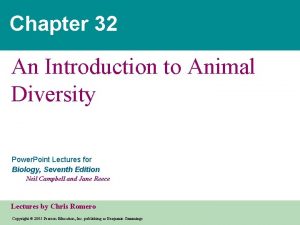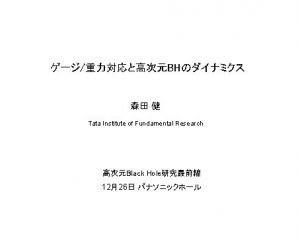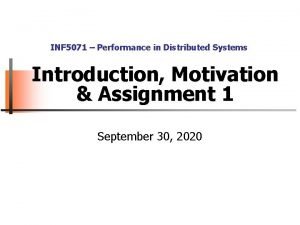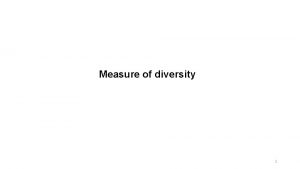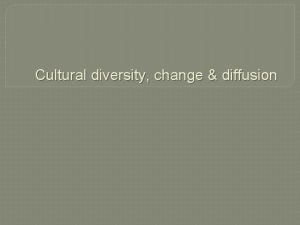STUDENTS DIVERSITY IN MOTIVATION INTRODUCTION Students motivation is









- Slides: 9

“STUDENT’S DIVERSITY IN MOTIVATION” INTRODUCTION Students motivation is likely to vary as a function of age, culture, gender, socioeconomic background and special education needs. There is no single best method of motivating learners. From the module of Student’s Diversity in Motivation, we will be able to know how these factors influences student’s motivation.

CONTENT � Diversity- the quality or state of having different forms, types, ideas, etc. -the state of having people who are different races or who have different cultures in a group or organization. � Motivation- the act or process of giving someone a reason for doing something.

Our students’ motivation may vary on account of age, gender, cultural, socioeconomic backgrounds, and special education needs. Our class is a conglomerate of students with varying ages, and gender and most especially cultural background and socioeconomic status. Our students’ motivational drives reflect the elements of the culture in which they grow up – their family, their friends, school, church, and books. To motivate all of them for learning, it is best to employ differentiated approaches. “Different folks, different strokes”. What is medicine for one may be poison for another.

Two principles to consider regarding social and cultural influences on motivation are: 1. Students are most likely to model the behaviours they believe are relevant to their situation. 2. Students develop greater efficacy for a task when they see others like themselves performing the task successfully. (Ormrod, 2004) What conclusion can be derived from the two principles? “Students need models who are similar themselves in terms of race, cultural background, socioeconomic status, gender, and (if applicable) disability. (Ormrod, 2004. ). Then it must be good to expose our student to models of their age and models who come from similar cultural, socioeconomic backgrounds. Do we have to limit ourselves to line models? Not necessarily. We can make our students read biographies and autobiographies of successful individuals who were in situations similar to them.

Diversity and Motivation: Culturally Responsive Teaching was coauthored by an educational psychologist and a former teacher/professor. Both are practioners and researchers examining effective classroom techniques that promote learning. The primary concern of the text is identifying key elements that can be used among a diversified student population by instructors in classroom relationships. In approaching “diversity” and “multiculturalism”, which are used interchangeably, the authors look at a wide range of characteristics including race, gender, class, impression after completing this text is that the authors bit off more than they could chew while simulataneously failing to adequate address teaching at the university level. If the authors had narrowed their topic and/or limited it to the elementary and secondary school level it would have been much more effective in its attempt to deliver useful information.

CONCLUSION From the module of Student’s Diversity in Motivation I conclude that students has different reasons or ways to become motivated. Some of them become motivated because of approval of something good, working hardly in order to gain success and because of their goal they become motivated in doing something. There also students who are not motivated because of the different reasons also. Like lacking of financial needs, having disabilities and etc. And also student’s motivation is depend upon the functioning of age and gender of the students. I have also learned the two principles to consider regarding social and cultural influences on motivation. One is the students are most likely to model the behavior they believe are relevant to their situation, which means students preferred to do or apply the behavior that they believe and that is related to their situation. Another is the students develop greater efficacy for a task when they see others like themselves performing the task successfully which means students will be more motivated in doing something if they saw something successful like as what they have done successfully too.


References: Ø Maria Rita D. Lucas, Ph. D and Brenda B. Corpuz, Ph. D, Facilitating Learning: A Metacognitive Process: Published by LORIMAR Publishing Inc. (Third Edition) Ø Margery B. Ginsberg & Raymond J. Wlodkowski, Diversity & Motivation: Culturally Responsive Teaching in College (Second Edition) Ø www. jstor. org/stable/3497001 & curry. virginia. edu/. . /rspon_r 8. html

Submitted by: Joycee H. Gamgam BEEd II-A Algen N. Atadero BEEd I-A Submitted to: Dr. Wilfreda G. Arones Thank You and God Bless!!!
